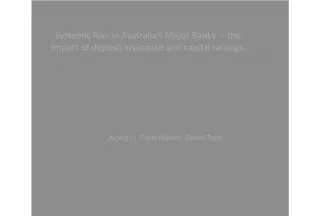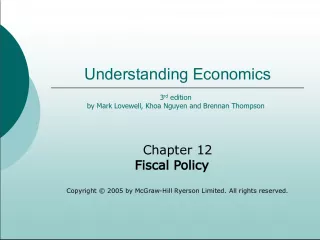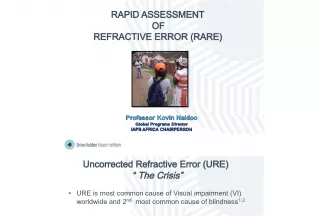The Financial Crisis, Sovereign Debt, and Post Crisis Debt Reduction


This article examines the pre-crisis risk factors that led to the financial crisis and subsequent sovereign debt crisis. It also explores the prospects for reducing sovereign debt in the post-crisis era, focusing on the capacity of Euro member countries to withstand financial shocks and the impact of the debt-GDP ratio.
- Uploaded on | 1 Views
-
 hirthesid
hirthesid
About The Financial Crisis, Sovereign Debt, and Post Crisis Debt Reduction
PowerPoint presentation about 'The Financial Crisis, Sovereign Debt, and Post Crisis Debt Reduction'. This presentation describes the topic on This article examines the pre-crisis risk factors that led to the financial crisis and subsequent sovereign debt crisis. It also explores the prospects for reducing sovereign debt in the post-crisis era, focusing on the capacity of Euro member countries to withstand financial shocks and the impact of the debt-GDP ratio.. The key topics included in this slideshow are Philip R Lane, financial crisis, sovereign debt crisis, post-crisis debt reduction, Euro member countries,. Download this presentation absolutely free.
Presentation Transcript
1. Philip R. Lane
2. Pre-Crisis Risk Factors The Financial Crisis and the Sovereign Debt Crisis Prospects for Post-Crisis Reduction in Sovereign Debt
3. Capacity of Euro-member countries to withstand financial shocks known to be a challenge Through 90s and mid 2000s public debt didnt appear to be a looming problem. With the creation of the Euro, 60% ceiling on debt/GDP ratio established, along with maximum of a 3% deficit/GDP ratio
5. Some countries that would get into fiscal crisis looked healthy around 2007 Low spread on sovereign debt showed markets didnt expect default risk Good growth performance masked the vulnerabilities
7. Financial imbalances and external imbalances posed risks Credit boom during the 2003-2007 period Ultimately, national governments failed to tighten fiscal policy during the period of growth from 2003- 2007
8. Global financial crisis of late 2008 had asymmetric effects across the euro zone. Even with financial crisis, euro area sovereign debt markets remained calm through most of 2009 In late 2009, sovereign debt crisis emerges Ireland and Spain had larger-than-expected increases in deficit/GDP ratios Most shocking new came from Greece, with 2009 budget deficit of 12.7 percent of GDP
10. Bailouts established under which three-year funding would be provided if certain conditions met Scale of funding far exceeded IMF lending levels, so EU was the major provider Several issues arose in the funding: Plausible time scale was longer than three-year term Fiscal targets not conditional on state of Euro zone Original bailouts included standard IMF penalty Increased volatility in debt markets leads to self- fulfilling speculative attacks
11. Many European countries will have elevated public debt ratios Even if current austerity measure are sufficient to stabilize debt ratios, the challenge will be reduction to safer levels Growth in nominal GDP will likely be slow Maintaining political environment will be difficult
12. New Fiscal Compact Treaty set to go in effect in 2013 with two primary principles High public debt levels pose a threat to stability Fiscal balance should be close to zero over the cycle Reformed system allows for cyclical effects and stronger enforcement of the 60% ceiling Primary source of fiscal discipline will be at the national level More extensive reforms possible in the future
13. Origin and propagation of the European sovereign debt crisis can be attributed to the flawed design of the euro Positive perspective is that the debt crisis will implement reforms to save the monetary union Alternative scenario could result in the mother of all financial crises























